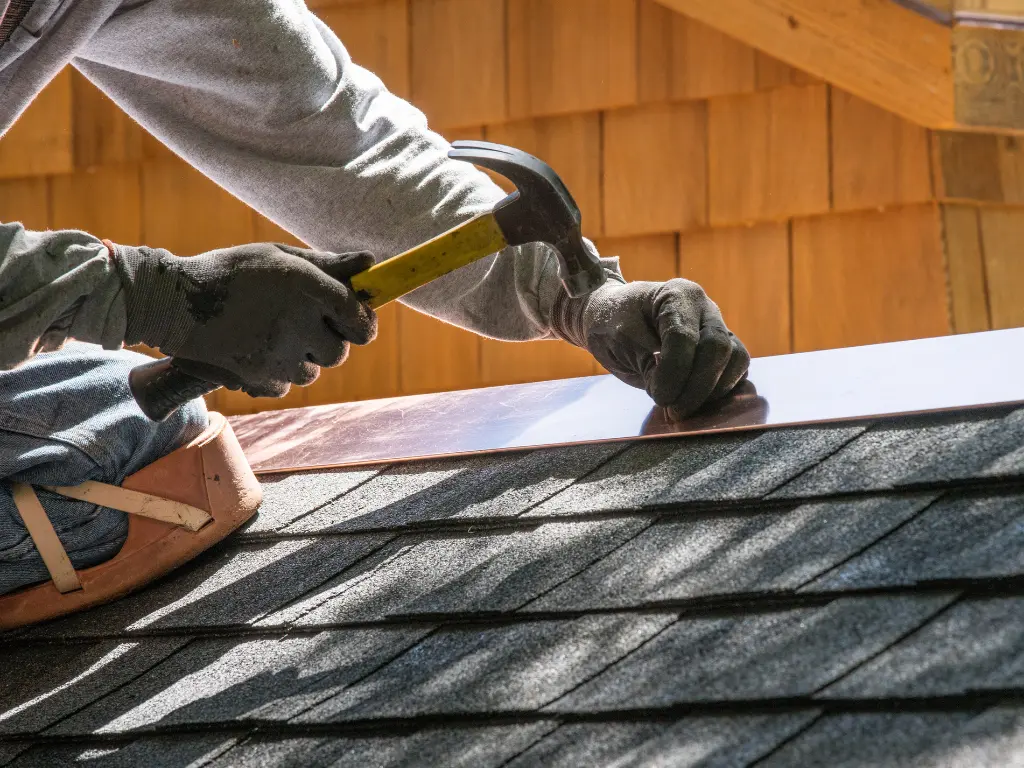Have you ever seen a drop of water on your ceiling following a Sydney downpour? Or did you see moss crawling throughout your roof following a wet week? Panic no more! One of the most vital but neglected components of homeownership is roof care.
In this piece, you will discover a seasonal roof maintenance schedule fit to the conditions of Sydney, as well as be ready to safeguard your roof, increase your home’s worth, and prevent unexpected repair expenditures by the end.
Roof Maintenance
Sydney Affordable Roofing Services has proven integrity when it comes to providing a working house guide for ultimate roof maintenance in Sydney. Regular examination, cleaning, repair, and upkeep of a roof, known as roof maintenance, help to guarantee it stays in top shape. Damage inspection, gutter cleaning, crack sealing, and tile or metal sheet security checking are among its measures. Correct roof maintenance promotes:
- Prolong the roof’s lifetime.
- Stop damage from leaks
- Preserve the structural integrity
- Support insulation to raise energy efficiency.
Constant roof maintenance improves the worth of your property and lowers emergency repairs, whether your house has concrete shingles, metal roofing, or terracotta tiles.
Why Sydney’s Roof Repair Is So Important.
Your roof protects your home from structural decay, water damage, and severe temperatures, in addition to enclosing it. Weather like strong sun, high humidity, and torrential rain in Sydney speeds up wear and tear. Ignoring your roof can cause:
- Mold and mildew expansion
- Structural deterioration
- The cost of replacing or repairing high
Well-maintained roofs can last up to 70 years (e.g., for terracotta tiles), but without attention, problems like leaks or tile movement can drastically reduce their lifespan.
Seasonal roof maintenance checklist
Get the seasonal roof maintenance checklist below:
Dec. to Feb. in summer
- Check for sun damage: UV rays can twist tiles and degrade sealants.
- Check ventilation: You allow enough air in order to reduce too much heat in the roof cavity. If appropriate, clear dust to preserve efficiency using clean solar panels.
- Gutter cleaning: It’s possible that storms can block the gutters with debris
Autumn (Mar–May)
- Remove obstructions from your gutters by clearing fallen leaves.
- Reduces damage from storms and garbage from overhanging limbs.
- Examine downpipes: Make sure water flows unhindered.
- Inspect tile location: storms may fracture or move tiles.
Jun–Aug Winter
- Check the ceiling and roof voids for leaks.
- Check flashing: Check to make sure it’s fixed well around the chimneys and vents
- Before storm season, clear the gutters.
- Verify roof insulation to increase energy efficiency.
Autumn (Sep–Nov)
- Look for storm damage: check following hail or intense rains.
- Pressure wash moss and lichens to help stop water buildup.
- Cover all cracks using weatherproof materials.
- Prepare for the upcoming leaf fall by installing leaf guards.
Typical Problems & DIY Remedies
Typical issues Sydney residents run into—and how to handle them—are here:
1. Broken or missing tiles: Change broken tiles with replacements and rebed and repoint the ridge capping using flexible pointing.
2. Gutter blockages: Clear leaves with a hose or blower, fill tiny holes with waterproof sealant, and prevent gutter guards from being installed
3. Flash Failure: Clean around the blinking, reseal little gaps with roofing cement, and use stainless steel flashing instead of the corrosion-prone one.
4. Mold and Moss Accumulation: Spray with moss killer; after twenty-four to forty-eight hours, gently pressure wash and employ a preventive moss inhibitor.
5. Loose screws or bolts: Replace loose screws with stainless steel; tighten them and examine anchor points for indicators of motion.
Safety and When to Consult a Professional
DIY is tempting but hazardous. Always bear in mind:
- Ascents and descents
- Electric lines near the roof
- weak or shaky constructions
Call a professional if you see:
- Large-scale leaks
- Structural sagging
- Damaged flashing on several sides
- Signs of termites or mice
Hire only licensed roofers certified by NSW Fair Trading; they should have public liability insurance and a working-at-heights certificate.
How infrequently should one care for their roof?
The number of times you can care for your roof depends on the age, type, and surroundings of the roof, but because of the weather conditions in Sydney, it’s good to do two inspections within a year. Immediately check for damage after wildfires or strong storms.
Because salt corrosion affects houses close to the shore, they might need more regular maintenance. Particularly in autumn, houses next to bushland or with tall trees have to have their gutters cleaned frequently.
How to Choose the Perfect Roofing Contractor
Choose wisely when it comes time to engage a professional:
1. Licensing: Ensure NSW Fair Trading licenses the roofer.
2. Check for workers’ compensation and public liability insurance coverage.
3. Check past work, Google ratings, and reviews.
4. Get at least two to three quotes for analysis.
5. A standard company will give you warranties on both services and workmanship
Stay away from door-to-door marketing strategies. Select regional companies with a long history in your neighborhood.
Expert Advice
1. Storm Response: Following hailstones or gusts, inspect your roof often.
2. Coastal regions: Utilize corrosion-resistant materials.
3. North-facing roofs: It’s proper to seal often and allow for more UV radiation.
4. Leafy suburbs: Give gutter cleaning every three months top priority.
Warning Signs: Your Roof Needs Immediate Attention
Some symptoms should not be overlooked. Your roof might need immediate attention if you see any of the following:
1. Ceiling or wall water markings
2. Visible segments of the roofline falling or drooping
3. Light moving through your attic area
4. A sudden increase in energy expenses caused by inadequate insulation in your garden after a storm, shingles, or tiles
Don’t wait for these signals to evolve into structural issues. Early discovery stops large financial losses.
Advantages of Preventive Roof Maintenance
Here are the advantages:
- Long-run investment in preventative care yields dividends. Here is the process:
- Early problem detection helps one save money.
- Lengthens roof life and postpones the whole replacement
- Keeps property value, especially when you sell your house.
- Shield’s interior assets from water and mold damage.
- By preserving insulation, it increases energy efficiency.
Preventative upkeep changes little jobs into huge savings over time.
Sydney houses confront serious roofing problems ranging from unexpected summer storms to seasonal weather variations. But with a wise seasonal checklist, easy DIY repairs, a strong grasp on when to hire a professional, and knowledge of the value of regular maintenance, you may protect your most expensive investment.
Roof maintenance is about avoiding issues as much as it is about fixing them. By giving your rooftop priority right now, you may regain command of your property’s worth and safety.
FREQUENTLY ASKED QUESTIONS
1. In Sydney, how frequently should I check my roof?
Twice a year—once before winter, once after summer—also following significant storms.
2. May I recycle damaged or cracked tiles?
No. Even minor cracks can cause leaks. Full tile replacement is necessary.
3. What season of the year would one want to conduct a roof inspection?
Autumn or spring, mild weather, and before or after torrential rains.
4. How much time does roof upkeep consume?
Gutter cleaning: 2–4 hours; full inspection: 1 day; restoration: 2–5 days.


